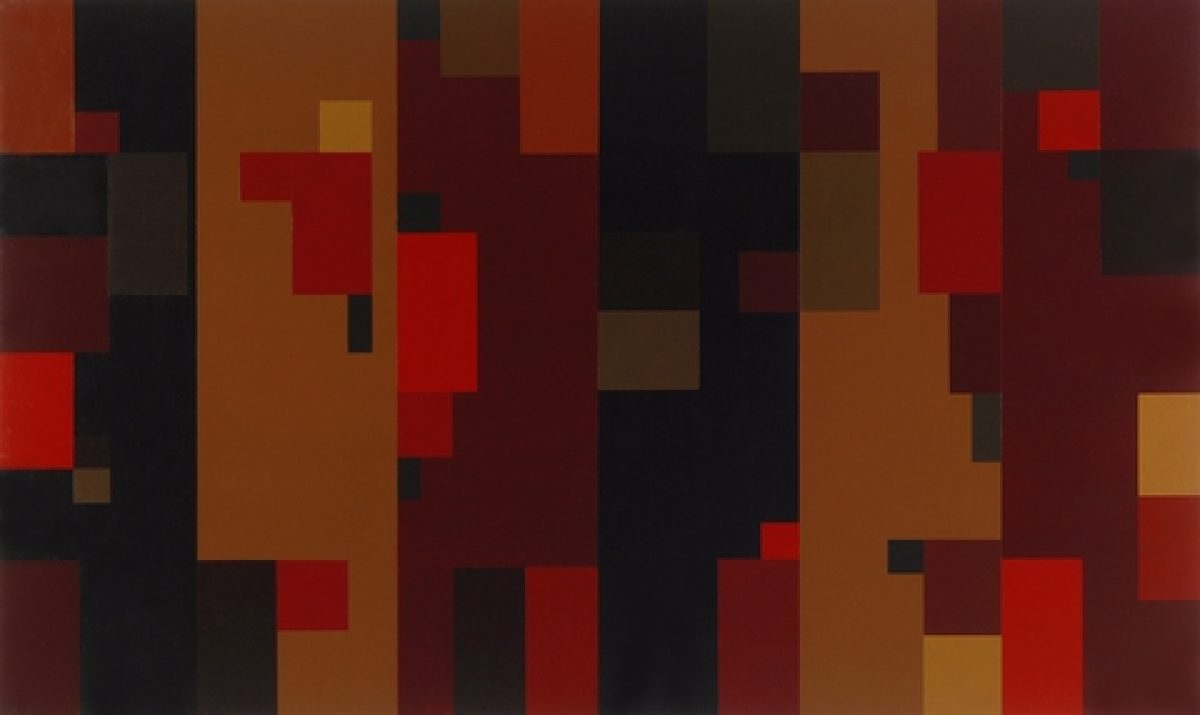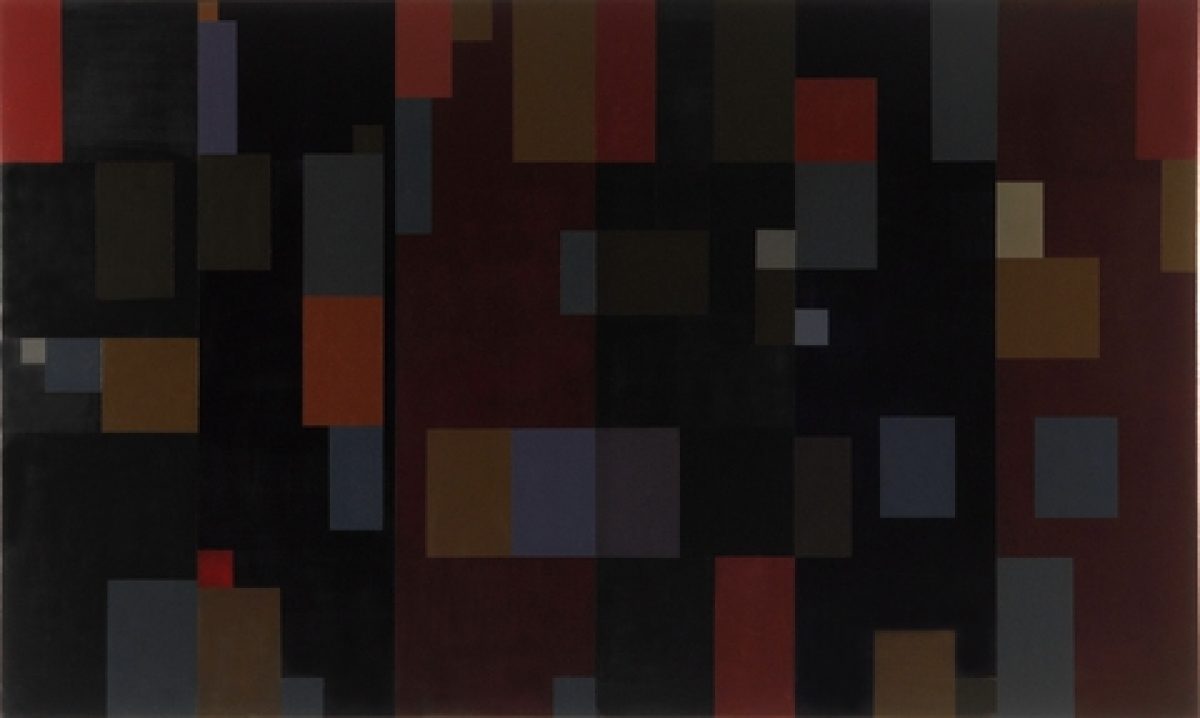Robert Jacks
15th February – 10th March 2007
Anna Schwartz Gallery
From the start of his career as a painter, forty years ago, Robert Jacks, alongside his minimal grids and monochromatic fields of colour, has been interested in composing abstract paintings as though they implied a narrative or possessed the presence of a still life. In this mode, the paintings either progress from piece to piece, from shape to shape, form to form, or juxtapose opposing elements within a central overlay of shapes, reminiscent of the classic design of late Cubism. The City Sleeps, belongs to the progression, or perhaps more accurately, the processional pieces. For a double procession occurs in these paintings: the procession is within each painting and from painting to painting, implying a walker in the city, even the flaneur. Although Jacks sets up each panel as a horizontal panorama, each painting is vertically, even vertiginously, composed. There are voids and volumes, masses and the spaces between them in The City Sleeps and The City Rises, less so in The Sound of the City where the blocks and grounds have a tighter, more rhythmic quality.
The effect of vertically arranged or composed pictures in horizontal, landscape formats is to slow the process from simply reading them at a glance to one which goes from stack to stack, noting the variation in tone, scale and in the fit of block to block. The City Sleeps and The City Rises are composed around six vertically determined stacks or blocks, reminiscent perhaps of the interchange between skyscraper and city street.
Robert Jacks has always been a keen student of modern art. His early work abounded in quotations from Brancusi, Arp and Tanguy. Later he paraphrased the Picasso of the 20s and Braque’s synthetic cubism. With the present pictures two artists cast light on Jacks’ poetry. The generic title The City Sleeps has an overtone of Edward Hopper’s ambiguous aubades and nocturnes of a nameless American city and there is something of the weight, the thickness of experience that Hopper instills in his finest urban scenes.
Another echo is of late Mondrian, the painter who began to attach London and Trafalgar Square to some of his most austere compositions and who breaks into a sublime dynamism in his New York Boogie Woogie paintings. As with Jacks’ The City Sleeps and The City Rises paintings, we inevitably read these paintings as silent narratives of urban realities — traffic, city lights, the flow and counter-flow of the great metropolis.
But if Jacks is a student of classic 20th century painting, he is unquestionably a master here of his own material. With their scale, their liveliness, their sense of underlying order and proportion, the balance of the random and the contained, they are masterpieces of contemporary painting.
Patrick McCaughey 2006
Images

Robert Jacks
The City Rises, 2006
Acrylic on linen
183 x 305 cm

Robert Jacks
The City Sleeps, 2006
Acrylic on linen
183 x 305 cm

Robert Jacks
The Sound of the City, 2006
Acrylic on linen
183 x 305 cm


